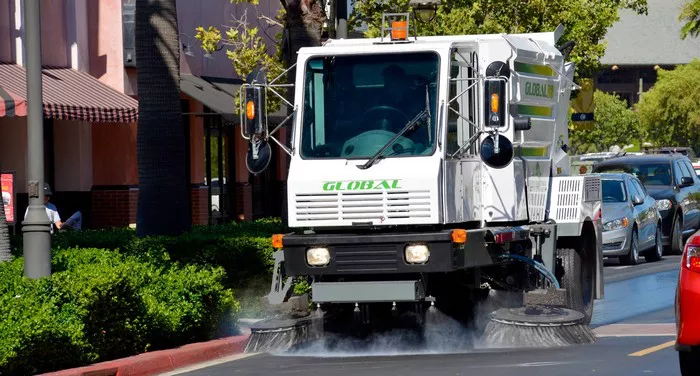Maintaining clean and safe roads is essential for the health and well-being of urban environments. Street sweepers play a crucial role in this regard, ensuring that our streets are free from debris, dust, and litter. These machines not only enhance the aesthetic appeal of urban areas but also contribute to public health by reducing pollutants and preventing accidents caused by road debris. Understanding how street sweepers work can help us appreciate their importance in urban maintenance and the technology behind their operation.
Street sweepers come in various types, each designed to handle specific cleaning tasks and conditions. The primary types include mechanical broom sweepers, vacuum sweepers, and regenerative air sweepers. Each type employs a unique method to clean streets effectively, but they all share the common goal of maintaining cleanliness and safety on our roads.
The Cleaning Process: A Three-Pronged Approach
The operation of street sweepers typically involves a three-pronged approach, utilizing a combination of water, brooms, and vacuum systems. This integrated method ensures thorough cleaning by addressing different aspects of road debris removal.
Water System
Water plays a vital role in the street sweeping process. The primary function of the water system in a street sweeper is to loosen dirt and dust that are adhered to the road surface. Water jets or sprays are strategically placed on the machine to target areas with accumulated dust and debris. By moistening these particles, the water system makes it easier for the brooms and vacuum to collect them.
Moreover, the water spray helps control dust generation during the sweeping process. Dust can become airborne and pose health hazards to both the operators and the public. By keeping the dust damp, the water system minimizes the amount of particulate matter that gets released into the air, ensuring a cleaner and healthier environment.
See also: The Role of Walk-Behind Sweepers
Broom System
The broom system is the mechanical heart of a street sweeper. Different types of brooms are used in street sweepers to dislodge and gather debris. The main types include side brooms, gutter brooms, and the main broom.
Side Brooms: These are typically located at the front or sides of the sweeper and are angled to flick debris towards the center of the machine. Side brooms are particularly effective at cleaning along curbs and gutters where debris tends to accumulate.
Gutter Brooms: These brooms are similar to side brooms but are specifically designed to clean the gutters along the road. They are often used in combination with side brooms to ensure thorough cleaning of the curbside.
Main Broom: Positioned under the sweeper, the main broom is responsible for sweeping the debris towards the center of the machine where it can be collected by the vacuum system. The main broom rotates against the direction of travel, effectively lifting and moving debris.
The brooms work together to dislodge dirt, litter, and debris from the road surface and move it towards the center of the sweeper. This coordinated action ensures that no debris is left behind, and the road is left clean and tidy.
Vacuum System
The vacuum system in a street sweeper is responsible for collecting the debris gathered by the brooms. Once the debris is centralized, the vacuum mechanism sucks it up into the machine. This system is particularly effective for picking up fine particles and light debris that the brooms might miss.
The vacuum system is connected to a hopper, which serves as the collection bin for the debris. The hopper is designed to hold a significant amount of material, allowing the sweeper to operate for extended periods without needing to be emptied. The efficiency of the vacuum system ensures that even the smallest particles are collected, contributing to the overall cleanliness of the streets.
Additional Features
Modern street sweepers come equipped with various additional features that enhance their functionality and efficiency.
Conveyor Belts: In mechanical sweepers, conveyor belts are used to transport debris from the main broom to the hopper. This system allows for continuous sweeping without frequent stops to empty the hopper.
Screen Traps: Vacuum sweepers often have screen traps that filter out large debris before it reaches the vacuum system. This prevents clogging and ensures the machine operates smoothly.
Hopper Capacity: The capacity of the hopper is an important feature as it determines how long the sweeper can operate before needing to unload. Larger hoppers mean fewer interruptions, allowing for more efficient cleaning routes.
Conclusion
Street sweepers are essential for maintaining clean and safe roads. Their operation involves a well-coordinated system of water, brooms, and vacuum to ensure thorough cleaning. The water system loosens dirt and controls dust, the brooms dislodge and gather debris, and the vacuum system collects the debris into a hopper. Additional features like conveyor belts, screen traps, and large hopper capacities further enhance the efficiency of these machines.
Clean streets not only improve the aesthetic appeal of urban areas but also have significant environmental and public health benefits. By reducing pollutants and preventing accidents caused by road debris, street sweepers play a crucial role in creating healthier and safer communities. Understanding how these machines work can help us appreciate the technology and effort involved in keeping our roads clean.

